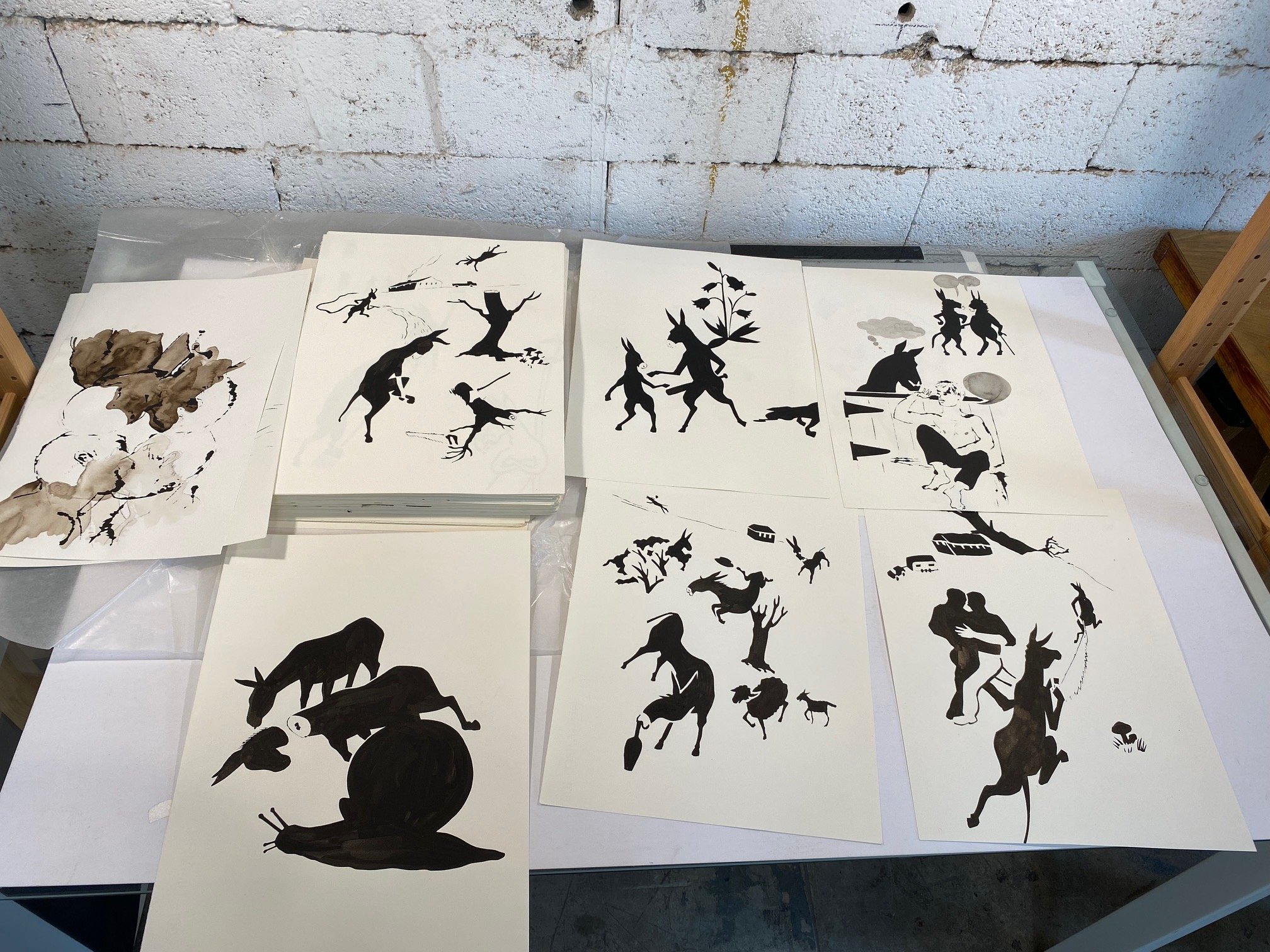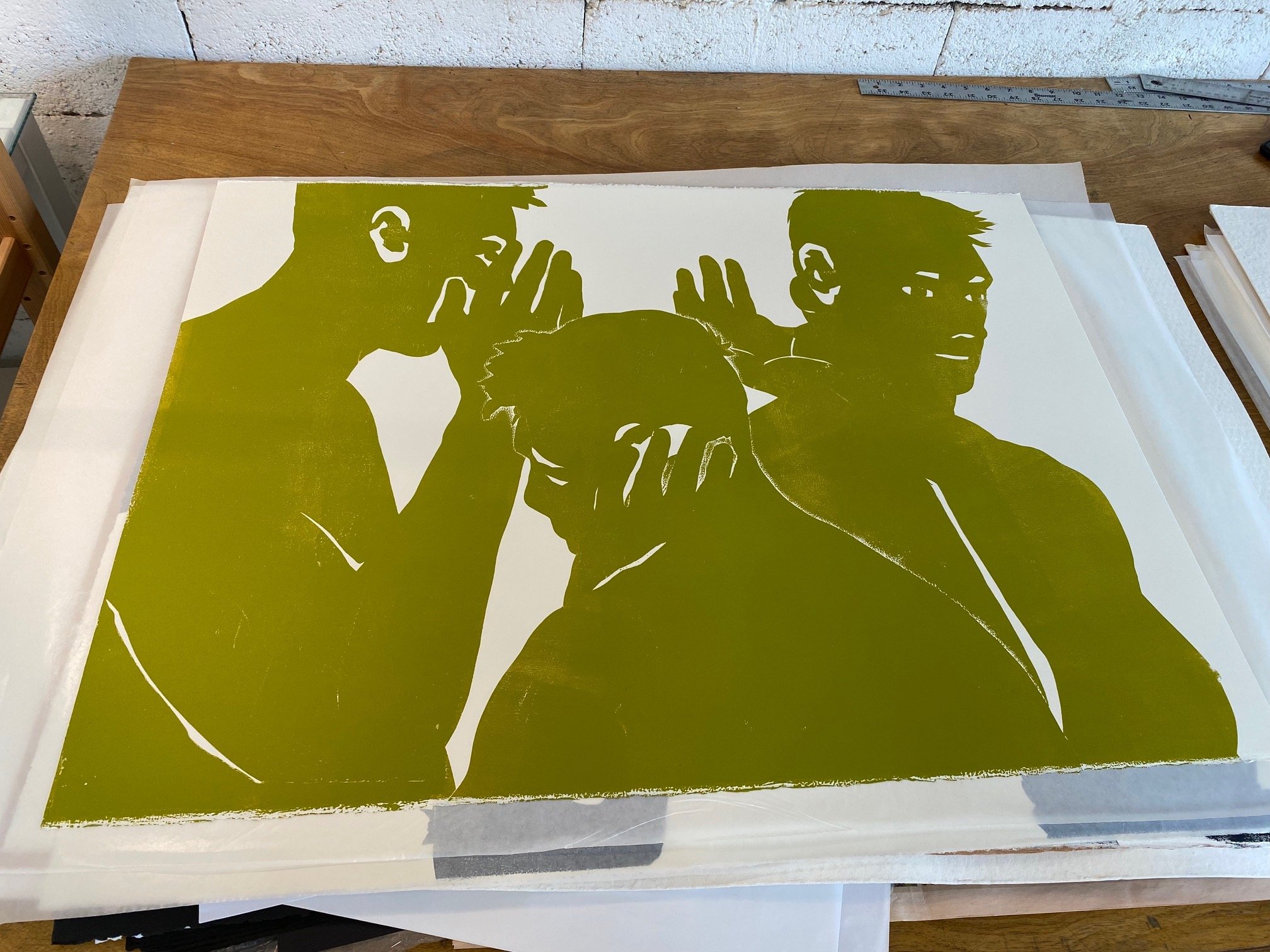A Studio Visit with Derek Weiler
Space 4 Art Open Studios, March 2022 | PC Nancee Lewis Photography
For Derek Weiler, his studio space and the people in it are the work. The objects he creates— drawings, prints, and printing plates turned sculptures —serve as the score for events that unfold during Space 4 Art’s Open Studios. “My studio is a place for conversations and community to happen,” Derek says. “If people look at the work while there, that’s great, too.”
Derek’s studio will be open during our next Open Studios event on Friday, June 17th from 7:00 to 9:30 PM, and he would love to welcome you into his space. This Open Studios falls during National LGBTQ+ PRIDE month, and Derek’s work intentionally brings visibility to experiences in the queer community.
I recently visited Derek Weiler in his studio at Space 4 Art to talk to him about his practice, which is grounded in an intergenerational dialogue about queer identity. As we began to talk, Derek asked me about my own art practice while he finished laying out his work. I got the sense that I was participating in an experience shared by many visitors before me, an experience of being heard, of learning, of sharing— an experience of friendship.
Derek requested that this blog post primarily focus on the artwork. Below are the images we looked at and a few things I learned along the way.
A Bit of Background that Remains in the Foreground
Derek grew up and attended art school in Germany, and then moved to New York City for his MFA. His work from that period drew on his experience as a queer man living in New York during the 1990s. There is a sense of darkness in these pieces that speaks to the ever-present fear of living at the epicenter of the HIV/AIDS crisis for the queer community at that time. “It was dangerous to be intimate, and yet we were all still trying to figure it out; we were all still trying to live our lives.”
Today, Derek is interested in bringing his experience into an intergenerational dialogue. His work reminds the viewer that although powerful medications can prevent and treat HIV/AIDS, there is still no cure. It still requires incredible bravery to be intimate, and young people are putting their bodies on the line just to be themselves. We need a cure for HIV/AIDS, and we need it yesterday.
Progress and Reflection
Derek’s early work was primarily concerned with his own body; now his models come from a new generation, shaped by a different set of experiences. Derek is just as interested in learning about queer culture and identity through his models’ perspectives as he is in passing along his own knowledge and history. “I’m impressed by their positivity, intelligence, inclusivity, and their willingness to take risks,” he said. The models are Derek’s friends, and he offers them the opportunity to have their image recorded, in a very traditional way, at a specific point in time. As they sit, the models talk about their lives. Derek’s studio is a space to be seen, heard, and made to feel welcome.
Artist Derek Weiler (left) and model Wade Olson at Open Studios, March 2022 | PC Nancee Lewis Photography
The Roots of the Practice
Though experimental, Derek’s work is rooted in traditional practices. As a person living far from where he grew up, Derek is drawn to traditional woodcuts, which speak to his German heritage. He takes his drawing practice seriously and sees traditional figure drawing as a dying artform calling out to be intentionally preserved. Derek appreciates the natural vulnerability present in the figure-drawing process. “Both people are putting something on the line– the model has to be willing to remove their clothing, and the artist has to be willing to let the model see the work in process.” Derek laughed as he recalled past interactions with his models. “If they don’t like the image, they will let you know!”
The Teacher and the Student
Derek described a self-portrait project that his community-college drawing students recently completed. He saw the students grow from a place of hesitancy and uncertainty to trusting their own lines and judgment. “I learn so much from them,” he said. Derek’s students have schooled him in equity teaching and the nonbinary conversation, and they have shaped his identity as an educator. When he first started, Derek pictured himself as lecturer and imparter of knowledge. Reflecting back on that first semester, Derek smiled ruefully. “That way of teaching just didn’t fly,” he said. “Now I see myself as a facilitator, holding space for students to go through a process of discovery.”





